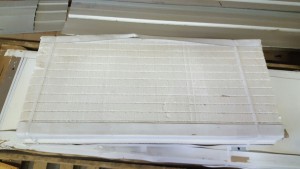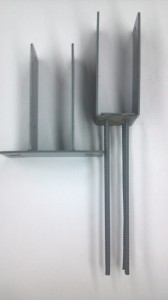Please see Friday’s blog for Part I of this two part blog.
FIGURE 1. New Vapor Retarder Provisions for the 2021 I-Codes (IRC shown)
NOTE: For more options and an automated means of compliance, refer to http://www.appliedbuildingtech.com/rr/1701-01(link is external) and the wall calculators found at www.continuousinsulation.org(link is external).
Improved Vapor Retarder Requirements Part II
Some of the most significant aspects of the new provisions in Figure 1 are explained as follows:
- A new format uses a look-up table approach to make it easier to identify all prescriptive requirements applicable to a given climate zone for a given frame wall assembly. For example, Table R702.7(2) is the launching point for determining water vapor retarder requirements and options. Other tables and text provide details for specific conditions of use.
- New provisions are provided for use of foam plastic insulating sheathing (continuous insulation) in combination with a Class II vapor retarder such as coated Kraft paper facers on fiberglass batt cavity insulation. See footnote ‘c’ in Table R702.7(2) which points to specific requirements in Table R702.7(4). This table compliments existing provisions for use of Class III vapor retarders while maintaining adequate inward drying potential and promoting better alignment with energy code R-value requirements for continuous insulation.
- The Class III vapor retarder provisions in Table R702.7(3) are expanded to apply to all of Climate Zone 4, not just Marine 4 (this applies to the 2021 IBC only). Table R702.7(2) also clarifies that Class III vapor retarders are permissible in Climate Zones 1-3 with no special requirements.
- The Class III vapor retarder provisions in Climate Zones 7 and 8 are differentiated and strengthened to address an inadvertent error in prior codes that treated Climate Zones 7 and 8 the same.
- In footnote ‘b’ of Table R702.7(2), the code specifically addressed the avoidance of so-called “double vapor barrier” walls (i.e., having Class I vapor retarder materials on both sides of the assembly). These types of walls have performed well in some conditions of use such as cold-dry climates with use of appropriate weather protection and application of sufficient exterior continuous insulation. However, there also are many cases where they have not performed well such as moist climates coupled with poor weather protection practices and inappropriate use of interior vapor barrier in warm-humid climates. One way, however, to realize the winter vapor control benefits of a Class I interior vapor retarder while avoiding the low inward drying potential problem is addressed in item 6 below.
- The code now recognizes “smart” or responsive vapor retarders for use in any climate zone as shown in footnote ‘a’ of Table R702.7(2). The code defines a responsive vapor retarder as any Class I or II vapor retarder (based on dry-cup water vapor permeance) that also has a water vapor permeance of greater than 1 perm (based on wet-cup water vapor permeance). When used on the interior side as a vapor retarder, they promote inward drying by “opening up” in periods or seasons where inward vapor drives occur (most prominent during spring and summer months). In the winter, they “close up” to restrict water vapor from moving into the assembly when outward vapor drives are the strongest and most persistent.
The other significant consideration is what is still missing from the IRC and IBC water vapor retarder provisions. Most importantly, the code lacks a means of controlling the vapor permeance on the interior and exterior side of wall assemblies that do not include continuous insulation to control water vapor as now addressed more completely in the 2021 codes. For example, the code provisions for continuous insulation in Figure 1 rely on compliance with underlying “insulation ratios” to ensure the inside of the wall does not reach a dew-point or high humidity levels for a sustained period of time and these ratios vary by climate. For walls without continuous insulation, the ratio of permeance of outer and inner layers of the wall must be similarly controlled by use of permeance ratios that also should vary with climate. However, such a methodology remains absent from the code. It is advisable to consider this potential omission carefully to better inform code compliance decisions. For additional information on this matter, refer to ABTG RR No. 1701-01(link is external), and the wood wall calculator(link is external) and steel wall calculator(link is external) that evaluate and implement insulation ratios and permeance ratios as applicable for walls with cavity insulation only, cavity and continuous insulation, or just continuous insulation.









